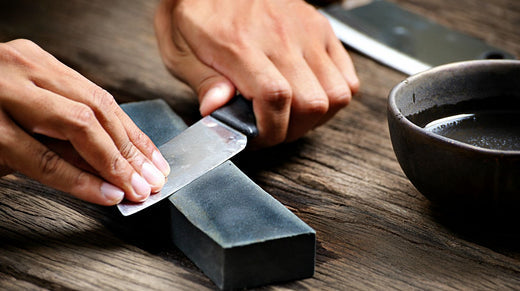
How to Choose the Right Grit Level Knife Sharpener
When it comes to maintaining your knives, using the right knife sharpener is essential for keeping them in top condition. But with so many options available, it can be challenging to know which grit level to choose. Grit, measured in numbers, indicates the coarseness or fineness of the sharpening stone or tool. Understanding the different grit levels and their uses will help you select the best sharpener for your needs, whether you’re a seasoned chef or just starting in the kitchen.
What is Grit?
Grit refers to the size of the abrasive particles on the sharpening surface. The lower the number, the coarser the grit; the higher the number, the finer the grit. For example, a 200-grit sharpener is very coarse, while a 1000-grit sharpener is much finer. The grit level affects how much material is removed from the blade and the sharpness you achieve.
Understanding the Different Grit Levels
To choose the right sharpener, it’s important to understand what each grit level does and when to use it:
-
Coarse Grit (200-400 grit):
- Use: This grit is best for knives that are very dull, damaged, or have nicks. It’s perfect for reshaping or repairing a blade before you move to finer grits.
- Example: If your knife has been neglected for some time and feels like it’s barely cutting, a coarse grit sharpener will help remove a significant amount of metal to restore its edge.
-
Medium Grit (600-800 grit):
- Use: This is a versatile grit that can be used to sharpen knives with a moderately dull edge. It’s often used as a middle ground between coarse and fine grits and can restore a good working edge.
- Example: If your knife is still cutting but not as efficiently as you’d like, a medium grit will help bring it back to a functional sharpness.
-
Fine Grit (1000-3000 grit):
- Use: Fine grit sharpeners are perfect for polishing and refining an edge. They can be used on knives that are already sharp but need a touch-up to maintain their performance.
- Example: If you regularly use a knife and want to maintain a fine, sharp edge, a fine grit sharpener is ideal.
-
Extra Fine Grit (4000-8000 grit):
- Use: Extra fine grit sharpeners are designed for achieving razor-sharp edges. They are often used by professional chefs or for knives that need the sharpest possible edge for precision tasks.
- Example: If you have high-end knives that you want to keep in pristine condition or need ultra-sharp edges for fine slicing, an extra fine grit sharpener is the best choice.
Factors to Consider When Choosing a Grit Level
When choosing a knife sharpener, several factors can influence which grit level you need:
-
Condition of the Knife: If your knife is severely dull, you may need to start with a coarse grit sharpener and gradually move to finer grits. If it’s just a little dull, medium or fine grit might suffice.
-
Frequency of Use: If you use your knife frequently, you’ll need to sharpen it more often, and a finer grit will help maintain its sharpness. For occasional use, a coarser grit may be necessary to restore the edge.
-
Type of Knife: Different knives have different sharpening requirements. For example, a chef’s knife might require a different sharpening approach compared to a paring knife or a serrated knife. A finer grit sharpener may be more suitable for delicate blades, while coarser grits are ideal for heavy-duty tools like cleavers.
-
Your Sharpening Skill Level: Beginners may find it easier to work with a medium grit sharpener before progressing to finer grits. If you’re new to knife sharpening, start with something forgiving and work your way up.
Choosing the Right Sharpener for Your Grit Needs
Once you’ve decided on the grit level, the next step is choosing the sharpener itself. There are several options:
-
Sharpening Stones (Whetstones): Whetstones typically come in various grit levels, and some are double-sided with different grits on each side. You can use a coarse grit on one side and a fine grit on the other to gradually refine the blade.
-
Electric Sharpeners: Many electric sharpeners offer different stages, including coarse, medium, and fine grits. They are user-friendly and efficient for quick sharpening.
-
Manual Sharpeners: These are typically easier to use than stones, though they may not offer as much precision. Some manual sharpeners allow you to adjust the grit level depending on your needs.
-
Rod or Honing Steel: This tool is not technically for sharpening but for maintaining the edge between sharpenings. It works best with knives that are already fairly sharp but need regular maintenance.
Conclusion: Finding the Right Grit for Your Knife
Choosing the right grit level knife sharpener ultimately depends on the condition of your knives, how often you use them, and how sharp you want them to be. For knives that are frequently used, a fine grit sharpener will help maintain a sharp edge. If your knife is very dull, starting with a coarser grit and working your way up is the best approach.
The right knife sharpener, whether coarse, medium, or fine, will help you preserve your knives and ensure they stay in optimal cutting condition. By understanding the grit levels and how they relate to your sharpening needs, you’ll be able to make an informed decision and keep your kitchen tools sharp for years to come. Happy sharpening!
